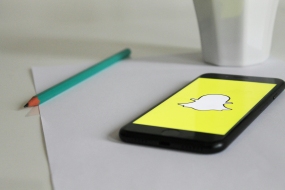Long before YouTube unboxings and Instagram Reels, brands turned to one source for influence: celebrities.
From movie stars on billboards to athletes in TV commercials, celebrity endorsements were once the gold standard of persuasive marketing. A nod from Marilyn Monroe or Michael Jordan could transform a product into a cultural phenomenon.
But in the digital age, we’ve seen a massive shift - from glitz and glamour to authenticity and relatability. Today’s consumers don’t just watch - they interact, comment, and share. And while celebrities still hold power, they now share the stage with influencers, creators, and micro-celebrities who feel more like friends than icons.
This article explores the arc of celebrity influence - from the golden age of Hollywood to the era of hashtags - and how our relationships with public figures have changed the way we consume.
The Classic Era: Trust in Stardom
In the 20th century, celebrity endorsements were aspirational. Movie stars like Audrey Hepburn and Paul Newman epitomised elegance and sophistication, selling everything from perfume to cars. When Marilyn Monroe famously declared she wore nothing but Chanel No. 5, sales soared - not because people identified with her, but because they admired her.
The same held true in sports. Michael Jordan’s partnership with Nike in the '80s and '90s created a blueprint for product endorsement - built around performance, excellence, and myth-making. These campaigns worked because celebrities were seen as larger-than-life figures, curated by the media and insulated from the everyday world.
Back then, consumers trusted celebrities because of their distance. Fame implied authority, and mass media ensured that only a select few voices reached the public.
The Shift: Social Media and the Rise of the Influencer
Enter the 2010s. Social media democratised fame. Anyone with a smartphone could become a content creator, building a following not through PR machines, but through consistency, niche expertise, and personal connection.
This was the birth of the influencer economy. Unlike traditional celebrities, influencers weren’t selling dreams - they were selling real lives, or at least the illusion of them. Whether it’s a beauty guru filming makeup tutorials or a tech expert reviewing gadgets, credibility came from relatability, not distance.
Even global stars like Rihanna or Cristiano Ronaldo now behave like influencers - posting behind-the-scenes content, interacting with fans, and building brand empires through direct engagement.
Parasocial Relationships: From Silver Screen to Screen Time
A key force behind both eras of influence is the parasocial relationship - a one-sided emotional bond people form with public figures. In the past, fans built these relationships through TV, magazines, and movies. But now, platforms like TikTok, Instagram, and YouTube have intensified this phenomenon.
Today’s creators often speak directly to the camera, respond to comments, and share intimate moments of their lives. The result? Viewers feel like they know them.
This emotional proximity creates a powerful trust loop:
- Viewers trust creators because they see them as real.
- That trust transfers to the products they recommend.
- Brands benefit from endorsement that feels organic, not orchestrated.
In essence, we’ve moved from admiration at a distance to connection up close.
Influence Now: Niche, Interactive, Authentic
What makes modern influencer marketing so effective isn’t reach alone - it’s relevance. Unlike the one-size-fits-all model of classic endorsements, today's campaigns target hyper-specific communities:
- A vegan cooking influencer on TikTok
- A productivity coach on LinkedIn
- A gamer streaming to a loyal following on Twitch
These creators may not have millions of fans, but they have deep influence over their niche - and that converts. Add to this the interactive nature of platforms (comments, likes, DMs, duets), and you have a two-way relationship that breeds trust and loyalty.
What This Means for Brands
The age of celebrity is far from over, but it has evolved. Brands that once relied on household names now thrive by partnering with influencers who match their audience’s identity and values.
- Legacy strategy: Aspire to be like the celebrity.
- Modern strategy: Trust someone who’s just like you.
In today’s economy of influence, authenticity beats perfection, and connection drives conversion. The challenge for marketers is no longer just about reach - it’s about relatability, consistency, and community.
Final Thoughts
From Monroe’s Chanel to TikTok’s GRWMs, the tools have changed, but the psychology of influence remains rooted in trust. What began on the red carpet has morphed into bedroom vlogs, livestreamed Q&As, and algorithm-driven storytelling.
We no longer buy what celebrities say we should - we buy what influencers show they use.
In this new era, the hashtag is mightier than the billboard.









